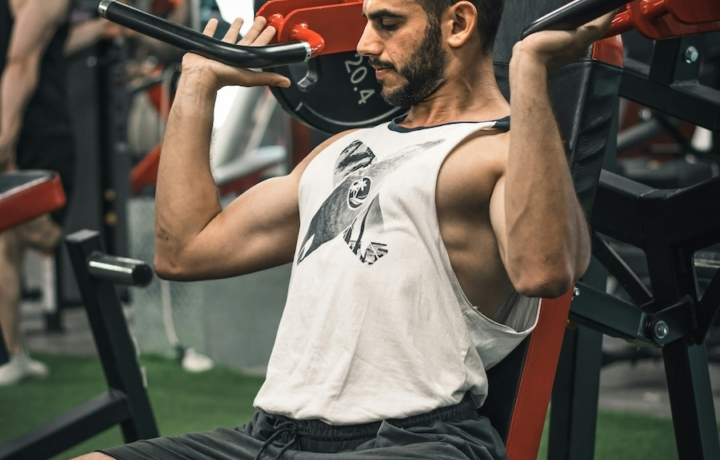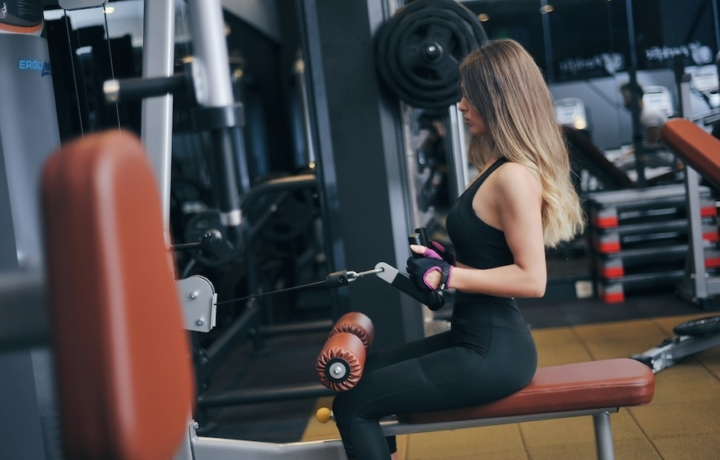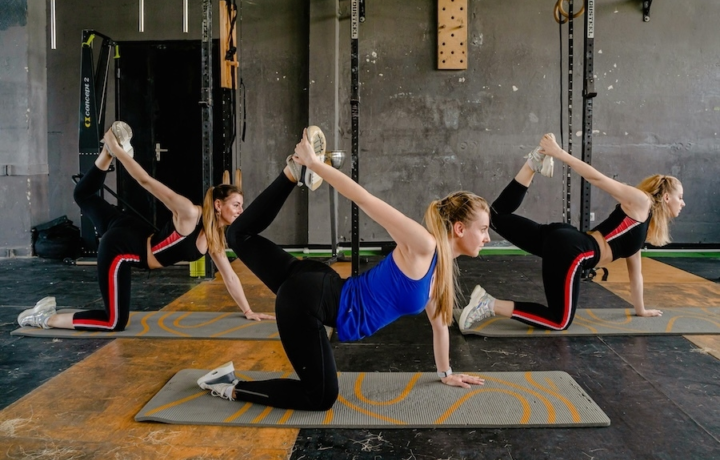Exercise
Roll Ball Triceps Latissimus Dorsi Stretch

Roll Ball Triceps Latissimus Dorsi Stretch
How to Perform
- Position a stability ball on the floor and kneel behind it with your knees hip-width apart and core engaged.
- Place your palms flat on top of the ball with arms slightly wider than shoulder-width apart and fingers pointing away from you.
- Exhale as you slowly roll the ball forward, extending your arms while keeping your back flat and abdominals tight.
- Continue rolling until your torso is parallel to the ground and you feel a stretch through your triceps and lats, maintaining a neutral spine position.
- Hold this extended position for 20-30 seconds while breathing deeply, focusing on relaxing into the stretch as you exhale.
- Avoid collapsing your shoulders forward; instead, keep them pulled back and down away from your ears.
- To return, inhale and slowly roll the ball back toward your body by bending your elbows and engaging your core.
- Return to the starting position and repeat for the desired number of repetitions, maintaining controlled movement throughout.
Important information
- Keep your neck aligned with your spine throughout the movement to prevent unnecessary strain.
- If you experience wrist discomfort, try shifting more weight onto the ball rather than pressing down through your palms.
- Start with smaller ranges of motion if you're a beginner, gradually increasing the distance as flexibility improves.
- Make sure your lower back doesn't sag during the stretch—maintain core engagement to protect your spine.

Roll Ball Triceps Latissimus Dorsi Stretch
Exercise Details
Primary Muscles
Muscle Groups
Mechanic
Risk Areas
Built for progress
Take the guesswork out of training
Create personalized AI-powered workout plans that evolve with you. Train smarter, track every rep and keep moving forward, one workout at a time.






The Roll Ball Triceps Latissimus Dorsi Stretch offers beginners an accessible yet effective way to release tension in two major upper body muscle groups simultaneously. This gentle stretching technique targets both the triceps, those three-headed muscles at the back of your arms, and the latissimus dorsi, the broad muscles spanning your mid and lower back that contribute significantly to posture and shoulder function.
This versatile recovery technique serves multiple purposes in your fitness routine. Whether incorporated into your warm-up to prepare these muscles for overhead movements, or as part of your cool-down to help release accumulated tension, this stretch promotes enhanced mobility throughout your posterior chain. The supportive nature of using a stability ball makes this particularly suitable for beginners who might find traditional stretching positions challenging to maintain.
Regular inclusion of this stretch can contribute to improved range of motion in the shoulders and better overall upper body mobility. By addressing both the triceps and lats simultaneously, you're efficiently targeting two areas that commonly develop tightness from daily activities like computer work or intense training sessions. The gentle pressure provides a myofascial release effect, helping to alleviate any adhesions that may have formed in the connective tissue surrounding these muscles.
For those who struggle with tight shoulders or limited overhead mobility, this stretch becomes especially valuable. The latissimus dorsi often contributes to restricted shoulder movement when tight, while triceps tension can limit elbow extension. By systematically addressing both muscle groups, you're creating a more balanced approach to upper body flexibility. The stability ball adds an element of controlled instability that encourages proper engagement of your core throughout the movement.
This recovery-focused stretch fits perfectly into any comprehensive mobility routine, requiring minimal equipment while delivering significant benefits. Whether you're an athlete looking to maintain performance or simply seeking relief from everyday tension, this accessible stretching technique provides an efficient way to care for your upper body musculature.
FAQ - Roll Ball Triceps Latissimus Dorsi Stretch
This stretch primarily targets two major muscle groups: the triceps (the three-headed muscles at the back of your arms) and the latissimus dorsi (the broad muscles spanning your mid and lower back). It also indirectly affects the shoulder joint and surrounding connective tissues.
Position the stability ball under your upper back/arm area, then gently roll your body weight onto the targeted muscles while extending your arm overhead. Move slowly, spending 20-30 seconds on tender spots, and breathe deeply throughout the stretch to encourage muscle relaxation.
For optimal shoulder mobility, perform this stretch 1-2 times daily, especially if you spend long hours at a desk. Include it both as part of your pre-workout warm-up and post-workout recovery routine to maximize its benefits and progressively improve your overhead range of motion.
Yes, this stretch is particularly suitable for beginners as the stability ball provides support that makes maintaining proper position easier. Start with gentle pressure and gradually increase intensity as your comfort level improves, always avoiding pain versus productive discomfort.
The most common errors include shrugging your shoulders toward your ears, overarching your lower back to compensate for limited shoulder mobility, and stretching too aggressively. Focus on quality over intensity, keep your core engaged to protect your spine, and remember that consistent, gentle stretching yields better results than occasional forceful attempts.










